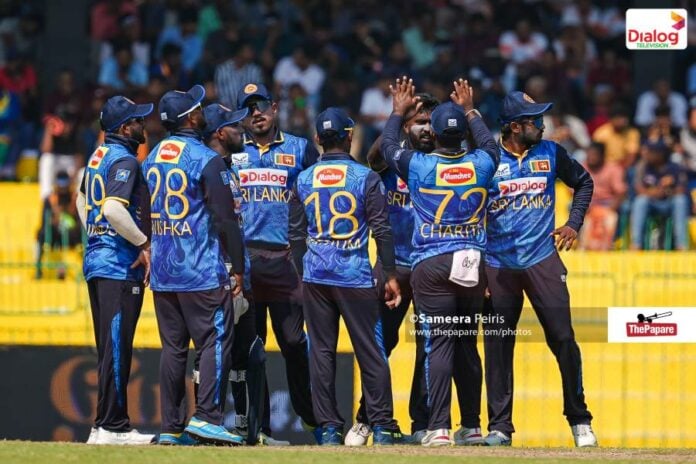If Sri Lanka’s 2023 World Cup campaign in India had a headline, it would read: “Dropped Catches, Dropped Hopes.” Their fielding, or lack thereof, was the Achilles’ heel. Take the clash against Pakistan, for instance. After posting a formidable 344 on the board – a total that should’ve put the game to bed – they somehow managed to lose. Butterfingers in the outfield and sluggishness on the turf cost them dearly. The same script unfolded against Afghanistan. In fact, across the tournament, Sri Lanka’s fielding was a talking point for all the wrong reasons.
When the dust settled, they were branded the worst fielding side of the competition. Ninth place. Knocked out of the next Champions Trophy. A bitter pill, no sugar-coating it.
But from the ashes of that disaster rose a renewed sense of purpose.
Sri Lanka Cricket, to their credit, didn’t just sweep things under the carpet. They took stock and made some bold moves. One of them was promoting former leg-spinning dynamo Upul Chandana to the role of national fielding coach. Chandana had already carved a name for himself working with the development squads – his elevation wasn’t just a reward for past service but a calculated move to inject energy into a stagnant discipline.
>>Pathum’s knock of redemption<<
Enter Sanath Jayasuriya. Appointed Head Coach around the same time, he wasted no time in setting the tone. In his first press briefing, he hammered home the need to raise the fielding bar. With two former gun fielders now calling the shots, the message was loud and clear: fielding lapses will not be tolerated anymore.
Suddenly, fielding wasn’t the afterthought at the end of a net session – it became the main event. New drills, some borrowed from other sports, were brought in to keep players sharp. Tokens of appreciation were handed out for standout fielding efforts during games, adding a competitive edge. What was once a yawning 20-minute warm-up now morphed into hour-long, high-intensity fielding sessions. The players were on their toes – literally and figuratively.
And the results began to show. Sri Lanka started turning half-chances into wickets. Direct hits, once as rare as hen’s teeth, became part of the regular highlights reel. When someone like Avishka Fernando—never known for being fleet-footed – pulls off a run-out with a direct hit, you know the culture has shifted.
This revival in fielding has been a silent but significant reason behind Sri Lanka’s improved white-ball performances over the past year. While runs and wickets grab the headlines, it’s those unseen extra efforts in the ring that tilt tight games.
>>Return of the Prodigal Mishara<<
Looking ahead to the international season, which includes bilateral series and the all-important Asia Cup, Sri Lanka Cricket has doubled down by roping in R. Sridhar, India’s former fielding guru. He’s not just working with the senior team but also rubbing shoulders with the Under-19s, the women’s teams, and the development squads. That’s a clear sign – fielding is no longer the poor cousin in Sri Lankan cricket.
But let’s be honest, you can fly in the best coaches from around the globe, throw in the fanciest equipment, but unless the players themselves buy in, it’s all for nothing. Fielding isn’t about flair – it’s about graft.
Just ask T.M. Dilshan.He entered the national side as a wicketkeeper-batsman but knew that with a certain Kumar Sangakkara around, that path was blocked. So, what did Dilshan do? He carved a new niche – as a livewire fielder. He made himself undroppable by becoming a sniper in the ring.
By his own admission, Dilshan roped in then fielding coach Trevor Penney for extra sessions after everyone else had packed up. The goal? Ten direct hits each from backward point and mid-off. At first, it took him two hours. Nine months later, he was hitting those targets inside 15 minutes. Opposition batters stopped chancing singles to him – even when his legs were weary and the sun was setting on his career.
There was a time when Sri Lanka’s fielding standards were the gold standard. The 1996 World Cup wasn’t just won with bat and ball – fielding was the third pillar. In the late ’90s, we matched Australia and South Africa, shoulder to shoulder, in fielding intensity. Rewind to the 1997 Asia Cup final – five brilliant catches by five different fielders. That was Sri Lankan cricket at its sharpest.
But over the years, that sharpness dulled. Fielding became a box to tick, not a badge of pride.
It’s heartening now to see that lost pride being reclaimed. The ground fielding is tighter, the throws are flatter, and the attitude has shifted from casual to committed.
Sri Lanka is back to placing a high price on fielding – and in the tight margins of modern cricket, that may just be the difference between being also-rans and champions.














